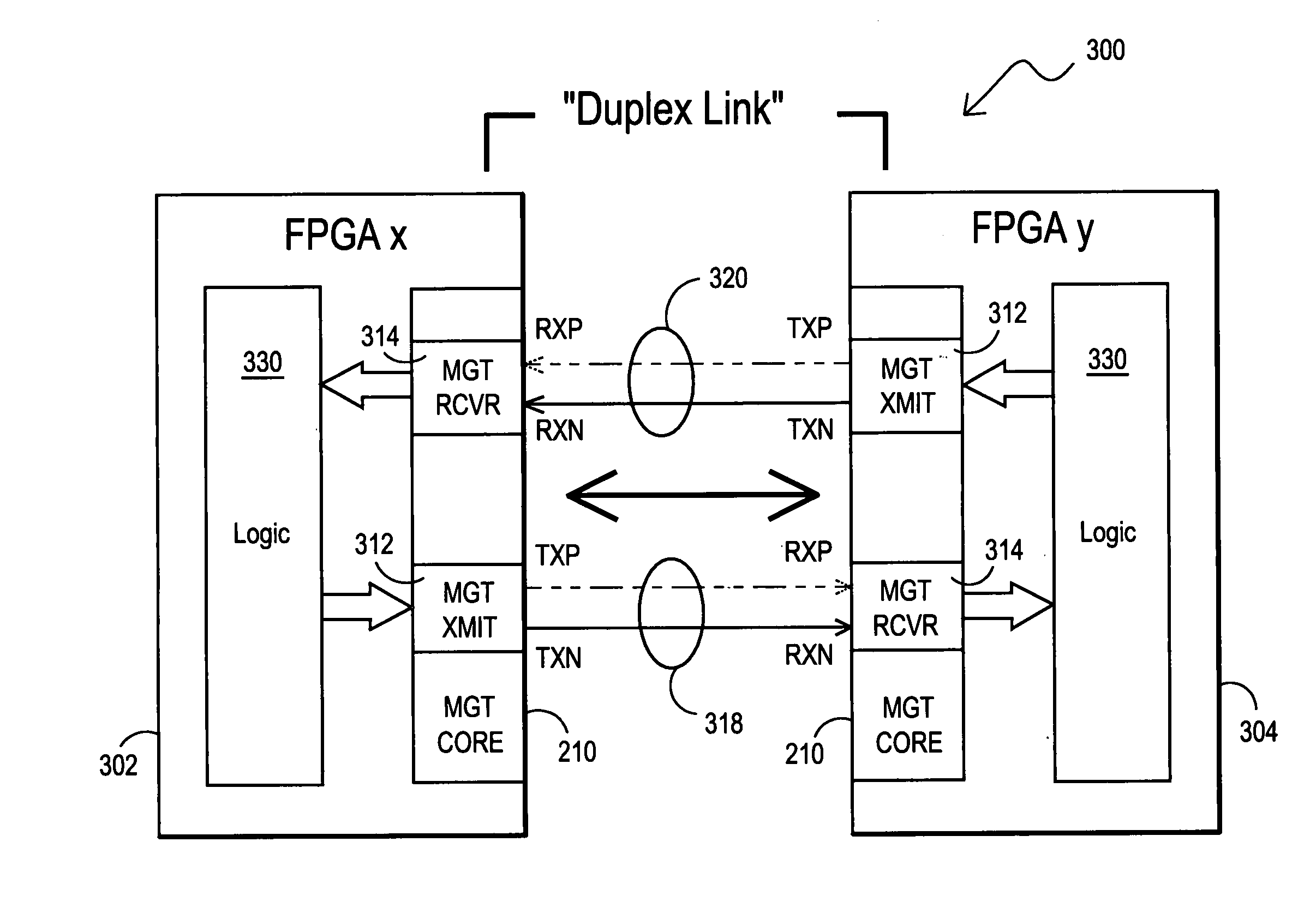Systems and methods for interconnection of multiple FPGA devices
- Summary
- Abstract
- Description
- Claims
- Application Information
AI Technical Summary
Benefits of technology
Problems solved by technology
Method used
Image
Examples
Embodiment Construction
[0031]FIG. 1 illustrates a reconfigurable signal processing circuit 100 as it may be configured on a single circuit card for reconfigurable signal processing and I / O applications according to one exemplary embodiment of the disclosed systems and methods. As shown in FIG. 1, multiple ASIC devices may be provided on a single circuit card, in this exemplary embodiment in the form of four FPGA devices 102, 104, 106 and 108. As will be described further herein, a packet router interface switch matrix (“PRISM”) may be provided to route packets between FPGA devices 102, 104, 106 and 108, and other card-level and off-card devices and interfaces in a manner as will be described further herein. As illustrated in the figures herein, arrowhead notation is provided to indicate signal communication with a particular component. In this regard, an arrowhead that intersects a given device or component indicates signal communication to that given component in the direction indicated, while a line wit...
PUM
 Login to View More
Login to View More Abstract
Description
Claims
Application Information
 Login to View More
Login to View More - R&D
- Intellectual Property
- Life Sciences
- Materials
- Tech Scout
- Unparalleled Data Quality
- Higher Quality Content
- 60% Fewer Hallucinations
Browse by: Latest US Patents, China's latest patents, Technical Efficacy Thesaurus, Application Domain, Technology Topic, Popular Technical Reports.
© 2025 PatSnap. All rights reserved.Legal|Privacy policy|Modern Slavery Act Transparency Statement|Sitemap|About US| Contact US: help@patsnap.com



